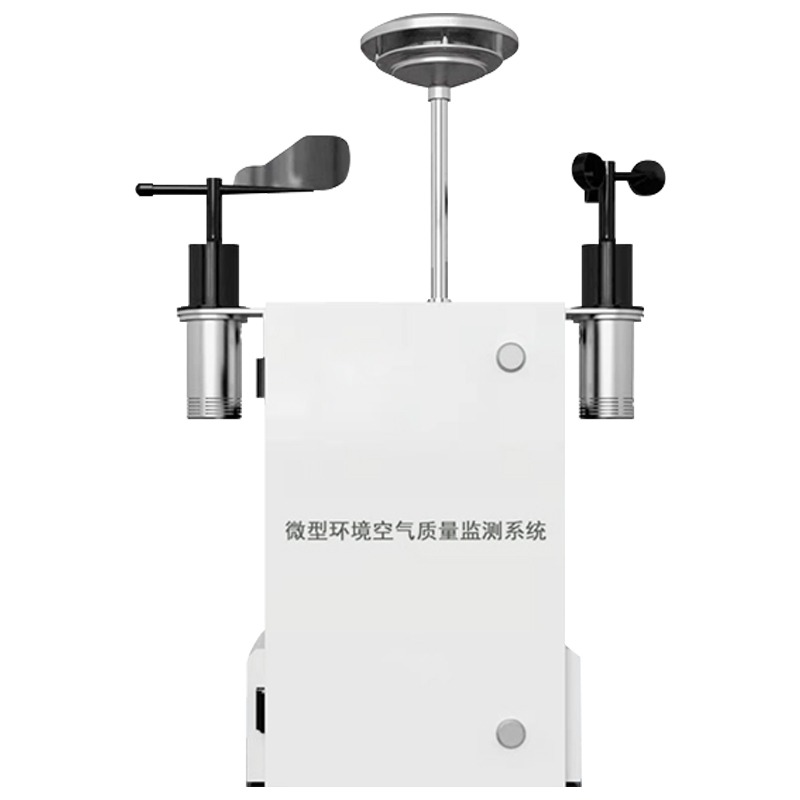Tianyi Sensor IOT Technology Co., Ltd
Sales Manager:Ms. Emily Wang
Cel,Whatsapp,Wechat:+86 15898932201
Email:info@fengtutec.com
Add:No. 155 Optoelectronic Industry Accelerator, Gaoxin District, Weifang, Shandong, China

Sales Manager:Ms. Emily Wang
Cel,Whatsapp,Wechat:+86 15898932201
Email:info@fengtutec.com
Add:No. 155 Optoelectronic Industry Accelerator, Gaoxin District, Weifang, Shandong, China
time:2025-07-24 08:46:32 source:Weather Station viewed:206 time
An air quality monitoring station is an unmanned environmental monitoring device that integrates data collection, storage, transmission, and management. Its core advantage lies in its ability to conduct high-precision, real-time monitoring of various pollutants. The system can provide data on parameters such as PM10, PM2.5, sulfur dioxide, nitrogen dioxide, carbon monoxide, ozone, and volatile organic compounds, and can also be expanded to monitor meteorological parameters. By reasonably deploying these miniaturized monitoring devices in various urban areas, a dense monitoring network can be formed to achieve comprehensive coverage of the urban atmospheric environment.
In cities, different areas have distinct functions and pollution source characteristics. Commercial areas may be mainly affected by motor vehicle exhaust and catering fume; industrial areas are dominated by industrial waste gas emissions; and around construction sites, dust pollution is more prominent. Air quality monitoring stations can be flexibly deployed in various types of areas according to these characteristics. In key areas such as industrial parks, transportation hubs, and densely populated residential areas, the number of monitoring devices is increased to ensure that any possible pollution changes can be detected in a timely manner.
After the monitoring equipment collects data in real-time, it will quickly upload the data to the monitoring platform through wireless transmission and other methods. The platform uses big data analysis technology to conduct in-depth mining of massive monitoring data. For example, by analyzing the changing trends of pollutant concentrations at different monitoring points and combining them with information such as wind direction and wind speed in meteorological data, the approximate direction and location of pollution sources can be accurately determined. If the concentration of PM2.5 in a certain area suddenly increases and the wind direction is blowing from a nearby industrial area at this time, it can be initially identified that there may be enterprises with abnormal emissions in that industrial area.
Once an abnormal pollution situation is detected, the air quality monitoring station can respond quickly. On the one hand, the system will immediately issue an early warning to notify the relevant environmental protection departments. On the other hand, environmental protection departments can rely on the detailed data provided by the monitoring system to quickly formulate targeted governance measures. For dust pollution, construction sites can be ordered to strengthen measures such as sprinkling water to reduce dust; for excessive industrial waste gas emissions, enterprises can be required to suspend production for rectification and inspect equipment problems.

As a crucial component of the power system, transmission lines undertake the important task of efficiently transmitting the electrical energy generated by power plants to various regions. By constructing a vast transmission network, electrical energy can travel over long distances to meet the electr...
Before the advent of ultrasonic anemometers, traditional wind speed and direction measurements mainly relied on mechanical sensors.Cup anemometers calculate wind speed through wind force pushing three or four hemispherical cups to rotate, with rotational speed proportional to wind speed.Wind vanes,...
An ultrasonic weather station is a highly integrated meteorological monitoring device that utilizes modern ultrasonic detection technology. It emits ultrasonic waves and measures changes in their propagation speed through the air to accurately calculate wind speed and direction, completely eliminati...
The operation of air quality monitoring stations relies on a comprehensive grid-based environmental supervision system. This system takes towns, communities (and villages) in cities as basic units, and divides them into air pollution prevention and control management grids according to different lev...